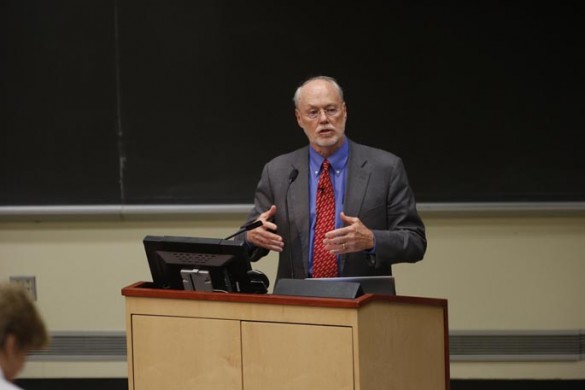
There’s been an explosion in the world of RNA — the nucleic acid “copy” of DNA, Nobel laureate Phillip Sharp, Ph.D., told the crowd gathered for his Flexner Discovery Lecture.
The “classical” RNA molecules, such as messenger RNA that codes for proteins, have been joined in the last decade by a large group of “non-coding” RNAs, which have roles in regulating gene expression.
“This should be of interest to many of the young people in the audience, because it says that life science is still a very new science, it’s a very young science, and there’s a lot of discovery to be made, and then a lot of translation of that discovery into therapeutic uses,” said Sharp, Institute Professor at the Massachusetts Institute of Technology. “This explosion in RNA is not over.”
Sharp described studies in humans showing that siRNA molecules (small interfering RNAs) can be used to turn off genes.
“This means we have a way of therapeutically intervening by targeting almost any gene in the body, so it gives us an avenue to look at new therapeutics,” he said. “I think we will have another method of therapeutic intervention that’s coming out of this new age of RNA.”
Sharp also discussed long non-coding RNAs and microRNAs, which act as “switches” to regulate about half of all RNA messages in the body. MicroRNAs are important in the cellular response to stress and appear to have a role in the rate of tumor development, Sharp said.
“There’s a whole new world of RNA that’s layered on top of a gene and is involved in regulation that we know very little about, and I’m confident it’s going to tell us a lot about how cells respond to oncogenes and tumor suppressor genes and developmental signals.”
The Vanderbilt-Ingram Cancer Center and the Department of Cancer Biology sponsored Sharp’s lecture. For a complete schedule of the Flexner Discovery Lecture series and archived video of previous lectures, go to www.mc.vanderbilt.edu/discoveryseries.












